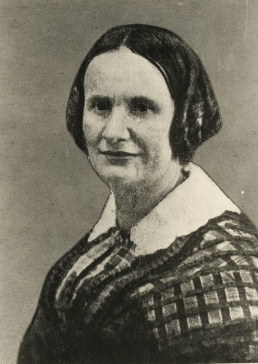Ohio Women's Convention at Salem in 1850 facts for kids
The Ohio Women's Convention at Salem in 1850 was an important meeting held in Salem, Ohio, on April 19–20, 1850. Salem was a town known for working to make society better. This convention was part of a series of meetings about women's rights, starting with the Seneca Falls Convention in 1848. It was special because it was the first women's rights meeting organized for a whole state. About 500 people came. All the leaders of the convention were women. Men were not allowed to vote or speak during the meeting. The women at the convention asked the state of Ohio to give women the right to vote in its new constitution.
Contents
Why the Salem Convention Was Important
The Ohio Women's Convention at Salem took place on April 19–20, 1850, in Salem, Ohio. Around 500 people attended this important event. The meetings were held at the Second Baptist Church and the Friends (Quaker) Meeting House.
This convention was the third in a series of meetings focused on women's rights. The first was the Seneca Falls Convention in 1848. The second was the Rochester Convention two weeks later. Both of these early meetings were regional, meaning they covered only a small area in western New York State. The Salem convention was the first women's rights meeting organized for an entire state. Later, the first national women's rights convention happened in Worcester, Massachusetts, in October 1850.
Salem: A Hub for Change
Salem was a very active place for social reform. Many people living there were against slavery, especially members of the Quakers. The Anti-Slavery Bugle, a newspaper that fought against slavery, started being published in Salem in 1845.
A local group called the Progressive Friends was formed in Salem in 1849. These Quakers had separated from the main group so they could work more freely for causes like ending slavery and women's rights. Even the local school board was made up of people who wanted to end slavery. All eight members of the school board had female relatives who took part in the Salem convention.
Goals of the Convention
The official announcement for the Salem convention stated its clear purpose. It aimed "to secure to all persons the recognition of equal rights, and the extension of the privileges of government without distinction of sex, or color." This meant they wanted everyone, no matter their gender or skin color, to have the same rights and opportunities in government.
Key Leaders and Their Roles
Betsy Mix Cowles was chosen as the president of the convention. Cowles had strong connections to both parts of the movement to end slavery. She had been a long-time supporter of rights for African Americans. For example, in Ohio, she led the fight against laws that treated black children unfairly in public schools. In 1835, she became the leader of the Female Anti-Slavery Society of Ashtabula County.
Jane Elizabeth Jones, who was a speaker against slavery, gave the main speech at the convention. Josephine Griffing, another important activist for both anti-slavery and women's rights, worked on the business committee.
All the official leaders of the convention were women. Men were not allowed to vote, sit on the main platform, or speak during the convention. However, the men who watched the convention were very supportive. After the meeting ended, they even created their own group and agreed with everything the women's convention had done.
Asking for Women's Voting Rights
The convention happened less than a month before Ohio's state convention began. That state convention was going to create a new Ohio constitution in 1850–1851. The Salem convention approved a special request, called a "memorial," which was sent to the constitutional convention. This memorial included 8,000 signatures from people who supported it.
The memorial ended by saying that laws should protect everyone and not make anyone dependent or oppressed. It argued that laws should not make women rely completely on their husbands, which would take away their freedom and make them totally dependent. The women believed that when women suffer from unfair laws, it hurts everyone. So, they strongly asked that the new Ohio Constitution give women not only the right to vote but also all the political and legal rights that men had.
Letters were also read to the convention from other famous women's rights leaders who could not attend. These included Elizabeth Cady Stanton, Lucretia Mott, and Lucy Stone.


